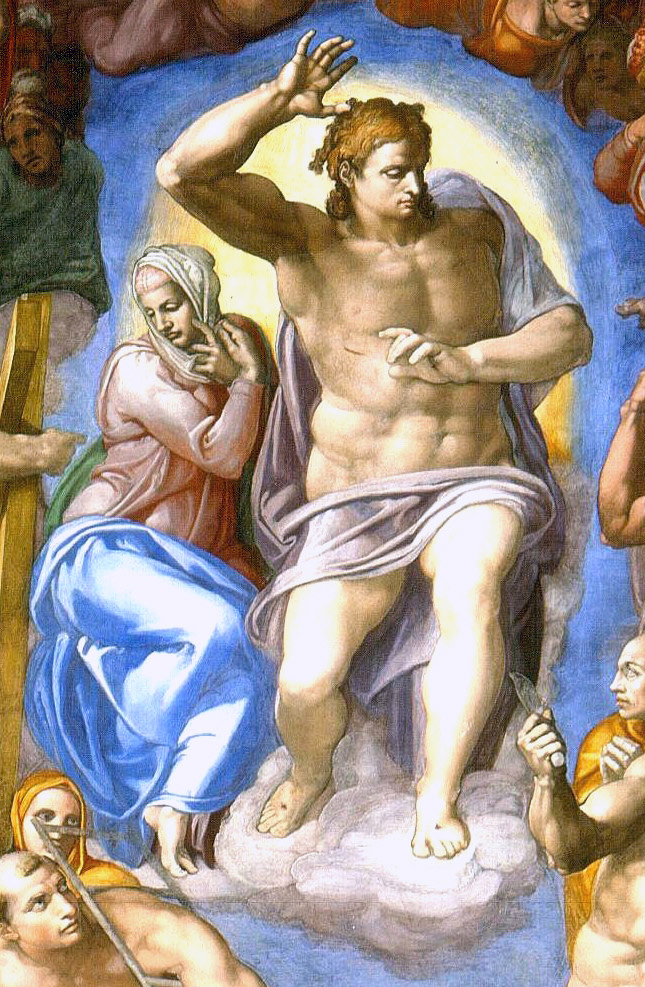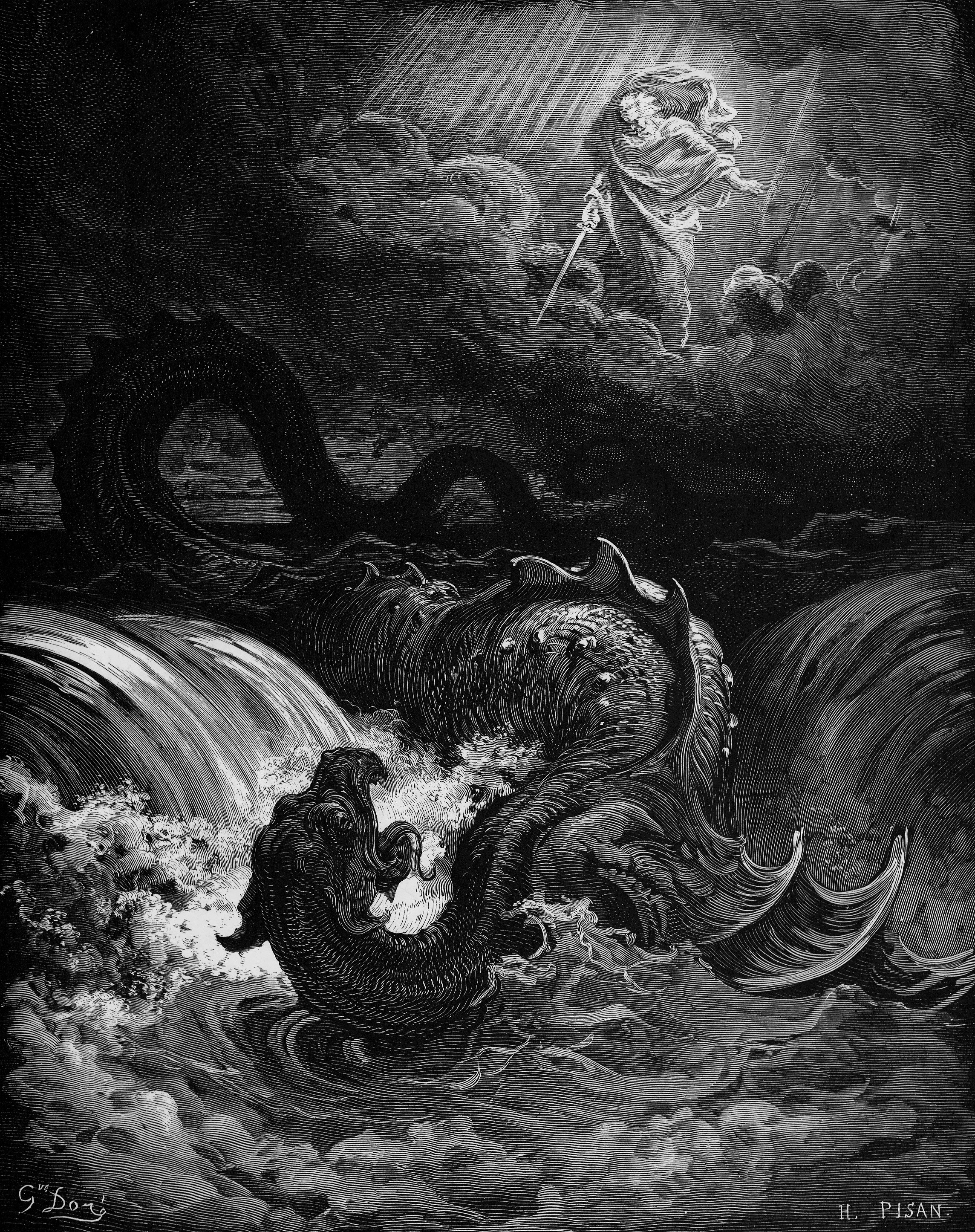|
Job 40
Job 40 is the 40th chapter of the Book of Job in the Hebrew Bible or the Old Testament of the Christian Bible.Holman Illustrated Bible Handbook. Holman Bible Publishers, Nashville, Tennessee. 2012. The book is anonymous; most scholars believe it was written around 6th century BCE. This chapter records the speech of God to Job, which belongs to the "Verdicts" section of the book, comprising Job 32:1– 42:6. Text The original text is written in Hebrew language. This chapter is divided into 24 verses in English Bibles, but counted to 32 verses in Hebrew Bible using a different verse numbering (see below). Verse numbering There are some differences in verse numbering of this chapter in English Bibles and Hebrew texts: This article generally follows the common numbering in Christian English Bible versions, with notes to the numbering in Hebrew Bible versions. Textual witnesses Some early manuscripts containing the text of this chapter in Hebrew are of the Masoretic Text, whi ... [...More Info...] [...Related Items...] OR: [Wikipedia] [Google] [Baidu] |
Book Of Job
The Book of Job (; hbo, אִיּוֹב, ʾIyyōḇ), or simply Job, is a book found in the Ketuvim ("Writings") section of the Hebrew Bible (Tanakh), and is the first of the Poetic Books in the Old Testament of the Christian Bible. Scholars are generally agreed that it was written between the 7th and 4th centuries BCE. It addresses theodicy, why God permits evil in the world, through the experiences of the eponymous protagonist. Job is a wealthy and God-fearing man with a comfortable life and a large family; God, having asked Satan ( hbo, הַשָּׂטָן, haśśāṭān, , label=none) for his opinion of Job's piety, decides to take away Job's wealth, family and material comforts, following Satan's accusation that if Job were rendered penniless and without his family, he would turn away from God. Structure The Book of Job consists of a prose prologue and epilogue narrative framing poetic dialogues and monologues. It is common to view the narrative frame as the original core ... [...More Info...] [...Related Items...] OR: [Wikipedia] [Google] [Baidu] |
Codex Sinaiticus
The Codex Sinaiticus (Shelfmark: London, British Library, Add MS 43725), designated by siglum [Aleph] or 01 (in the Gregory-Aland numbering of New Testament manuscripts), δ 2 (in the von Soden numbering of New Testament manuscripts), or Sinai Bible is a 4th-century Christian manuscript of a Greek Bible, containing the majority of the Greek Old Testament, including the Apocrypha, and the Greek New Testament, with both the Epistle of Barnabas and the Shepherd of Hermas included. It is written in uncial letters on parchment. It is one of the four great uncial codices (these being manuscripts which originally contained the whole of both the Old and New Testaments). Along with Codex Alexandrinus and Codex Vaticanus, it is one of the earliest and most complete manuscripts of the Bible, and contains the oldest complete copy of the New Testament. It is a historical treasure, and using the study of comparative writing styles (palaeography), it has been dated to the mid-4th cen ... [...More Info...] [...Related Items...] OR: [Wikipedia] [Google] [Baidu] |
Pride
Pride is defined by Merriam-Webster as "reasonable self-esteem" or "confidence and satisfaction in oneself". A healthy amount of pride is good, however, pride sometimes is used interchangeably with "conceit" or "arrogance" (among other words) which are negative. Oxford defines it as "the quality of having an excessively high opinion of oneself or one's own importance." This may be related to one's own abilities or achievements, positive characteristics of friends or family, or one's country. Richard Taylor defined pride as "the justified love of oneself", as opposed to false pride or narcissism. Similarly, St. Augustine defined it as "the love of one's own excellence", and Meher Baba called it "the specific feeling through which egoism manifests." Philosophers and social psychologists have noted that pride is a complex secondary emotion which requires the development of a sense of self and the mastery of relevant conceptual distinctions (e.g. that pride is distinct from happi ... [...More Info...] [...Related Items...] OR: [Wikipedia] [Google] [Baidu] |
Divine Judgment
Divine judgment means the judgment of God or other supreme beings within a religion. Ancient beliefs In ancient Sumerian religion, the sun-god Utu and his twin sister Inanna were believed to be the enforcers of divine justice. Utu, as the god of the sun, was believed to see all things that happened during the day and Inanna was believed to hunt down and punish those who had committed acts of transgression. After she was raped in her sleep by the gardener Shukaletuda, she unleashed a series of plagues upon the whole world before tracking him down and killing him in the mountains. In another story, she hunted down the old bandit woman Bilulu, who had murdered her husband Dumuzid, and turned her into a waterskin. The Sumerians, as well as later Mesopotamian peoples, believed that all mortals went to the same afterlife: Kur, a cold, dark, cavern deep beneath the earth. Kur was miserable for all people and a person's actions during life had no impact whatsoever on how he or she ... [...More Info...] [...Related Items...] OR: [Wikipedia] [Google] [Baidu] |
Hippopotamus
The hippopotamus ( ; : hippopotamuses or hippopotami; ''Hippopotamus amphibius''), also called the hippo, common hippopotamus, or river hippopotamus, is a large semiaquatic mammal native to sub-Saharan Africa. It is one of only two extant species in the family Hippopotamidae, the other being the pygmy hippopotamus (''Choeropsis liberiensis'' or ''Hexaprotodon liberiensis''). Its name comes from the ancient Greek for "river horse" (). Aside from elephants and rhinos, the hippopotamus is the largest land mammal. It is also the largest extant land artiodactyl. Despite their physical resemblance to pigs and other terrestrial even-toed ungulates, the closest living relatives of the hippopotamids are cetaceans (whales, dolphins, porpoises, etc.), from which they diverged about 55 million years ago. Hippos are recognisable for their barrel-shaped torsos, wide-opening mouths with large canine tusks, nearly hairless bodies, pillar-like legs, and large size: adults average ... [...More Info...] [...Related Items...] OR: [Wikipedia] [Google] [Baidu] |
Modern English Version
The Modern English Version (MEV) is an English translation of the Bible begun in 2005 and completed in 2014. The work was edited by James F. Linzey, and is an update of the King James Version (KJV), re-translated from the Masoretic Text and the ''Textus Receptus.'' The ecumenical Committee on Bible Translation is composed of 47 American and English scholars from the three major branches of Christianity: Orthodox, Protestant, and Roman Catholic. History In June 2005, Southern Baptist minister, chief editor, and executive director Rev. James F. Linzey assembled and directed the Committee on Bible Translation, which included Stanley M. Horton serving as the senior editorial advisor. The Committee produced an updated edition of the KJV called the MEV, which is the KJV in a more modern English vernacular. The translators began the work on June 2, 2005; they completed the New Testament on October 25, 2011, and the Old Testament on May 28, 2014."Preface," ''MEV Thinline Reference Bibl ... [...More Info...] [...Related Items...] OR: [Wikipedia] [Google] [Baidu] |
New King James Version
The New King James Version (NKJV) is an English translation of the Bible. The complete NKJV Bible was published in 1982 by Thomas Nelson, now HarperCollins. The NKJV is described by Thomas Nelson as being "scrupulously faithful to the original, yet truly updated to enhance its clarity and readability." History The NKJV translation project was conceived by Arthur Farstad. It was inaugurated in 1975 with two meetings (Nashville and Chicago) of 130 biblical scholars, pastors, and theologians. The men who were invited prepared the guidelines for the NKJV. The aim of its translators was to update the vocabulary and grammar of the King James Version, while preserving the classic style and literary beauty of the original 1769 edition of the King James Version. The 130 translators believed in faithfulness to the original Greek, Aramaic, and Hebrew texts including the Dead Sea Scrolls. Also agreed upon for most New King James Bibles were easier event descriptions, a history of each b ... [...More Info...] [...Related Items...] OR: [Wikipedia] [Google] [Baidu] |
Job 41
Job 41 is the 41st chapter of the Book of Job in the Hebrew Bible or the Old Testament of the Christian Bible.Holman Illustrated Bible Handbook. Holman Bible Publishers, Nashville, Tennessee. 2012. The book is anonymous; most scholars believe it was written around 6th century BCE. This chapter records the speech of God to Job, which belongs to the "Verdicts" section of the book, comprising Job 32:1– 42:6. Text The original text is written in Hebrew language. This chapter is divided into 34 verses in English Bibles, but only 26 verses in Hebrew Bible using a different verse numbering (see below). Verse numbering There are some differences in verse numbering of this chapter in English Bibles and Hebrew texts: This article generally follows the common numbering in Christian English Bible versions, with notes to the numbering in Hebrew Bible versions. Textual witnesses Some early manuscripts containing the text of this chapter in Hebrew are of the Masoretic Text, which incl ... [...More Info...] [...Related Items...] OR: [Wikipedia] [Google] [Baidu] |
Leviathan
Leviathan (; he, לִוְיָתָן, ) is a sea serpent noted in theology and mythology. It is referenced in several books of the Hebrew Bible, including Psalms, the Book of Job, the Book of Isaiah, the Book of Amos, and, according to some translations, in the Book of Jonah; it is also mentioned in the Book of Enoch. The Leviathan is often an embodiment of chaos and threatening to eat the damned after their life. In the end, it is annihilated. Christian theologians identified Leviathan with the demon of the deadly sin envy. According to Ophite diagrams, the Leviathan encapsulates the space of the material world. The Leviathan of the Book of Job is a reflection of the older Canaanite ''Lotan'', a primeval monster defeated by the god Baal Hadad. Parallels to the role of Mesopotamian Tiamat defeated by Marduk have long been drawn in comparative mythology, as have been wider comparisons to dragon and world serpent narratives such as Indra slaying Vrtra or Thor slaying Jörm ... [...More Info...] [...Related Items...] OR: [Wikipedia] [Google] [Baidu] |
Behemoth
Behemoth (; he, בְּהֵמוֹת, ''bəhēmōṯ'') is a beast from the biblical Book of Job, and is a form of the primeval chaos-monster created by God at the beginning of creation; he is paired with the other chaos-monster, Leviathan, and according to later Jewish tradition both would become food for the righteous at the end-time. Metaphorically, the name has come to be used for any extremely large or powerful entity. Etymology The Hebrew word ''behemoth'' has the same form as the plural of the Hebrew noun בהמה ''behemah'' meaning 'beast', suggesting an augmentative meaning 'great beast'. However, some theorize that the word might originate from an Egyptian word of the form '' pꜣ jḥ mw'' 'the water-ox' meaning 'hippopotamus', altered by folk etymology in Hebrew to resemble ''behemah''. However, this phrase with this meaning is unattested at any stage of Egyptian. Biblical description Behemoth is mentioned in a speech from the mouth of God in chapter 40 of the B ... [...More Info...] [...Related Items...] OR: [Wikipedia] [Google] [Baidu] |
Pulpit Commentary
The ''Pulpit Commentary'' is a homiletic commentary on the Bible created during the nineteenth century under the direction of Rev. Joseph S. Exell and Henry Donald Maurice Spence-Jones. It consists of 23 volumes with 22,000 pages and 95,000 entries, and was written over a 30-year period with 100 contributors. Rev. Joseph S. Exell M.A. served as the editor of ''Clerical World'', ''The Homiletical Quarterly'' and the ''Monthly Interpreter''. Exell was also the editor for several other large commentary sets like ''The Men of the Bible'', ''The Preacher's Homiletic Library'' and ''The Biblical Illustrator''. Henry Donald Maurice Spence-Jones was the Vicar and Rural Dean of St. Pancras, London and the principal of Gloucester Theological College Gloucester Theological College (1868–1897) was an Anglican theological college for the Diocese of Gloucester and Bristol in Gloucestershire, England. History The college was established in 1868 (formally opened in 1869) by Charle ... [...More Info...] [...Related Items...] OR: [Wikipedia] [Google] [Baidu] |







